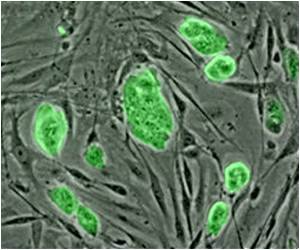Glaucoma is a group of degenerative diseases that damage the eye's optic nerve and can result in vision loss and blindness.

‘Stem cells grown into retinal ganglion cells (RGCs) could be the key for treating Glaucoma, a common degenerative disease that affects RGCs.
’





In addition to glaucoma, a group of degenerative diseases that damage the eye's optic nerve and can result in vision loss and blindness, this work has potential implications for treatment of optic- nerve injuries of the types incurred by soldiers in combat or athletes in contact sports. In the study, which appears online in advance of publication in the journal Stem Cells, the IUPUI investigators took skin cells biopsied from volunteers with an inherited form of glaucoma and from volunteers without the disease and genetically reprogrammed them to become pluripotent stem cells, meaning they are able to differentiate into any cell type in the body. The researchers then directed the stem cells to become RGCs at which point the cells began adopting features specific to RGCs -- features that were different in the cells of individuals with glaucoma than in the cells that came from healthy individuals.
Glaucoma is the most common disease that affects RGCs, which serve as the connection between the eye and the brain, sending information taken in by the eye to the brain for interpretation. When these cells are damaged or severed, the brain cannot receive critical information, leading to blindness. The National Institutes of Health's National Eye Institute estimates that glaucoma affects more than 2.7 million people in the United States and more than 60 million worldwide.
"Skin cells from individuals with glaucoma are no different from skin cells of those without glaucoma," said Meyer, a cell biologist and stem cell researcher, who also holds an appointment as a primary investigator with the Stark Neurosciences Research Institute at the Indiana University School of Medicine. "However, when we turned glaucoma patients' skin cells into stem cells and then into RGCs, the cells became unhealthy and started dying off at a much faster rate than those of healthy individuals."
"Now that we have produced cells that develop features of glaucoma in culture dishes, we want to see if compounds we add to these RGCs can slow down the degeneration process or prevent these cells from dying off. We already have found candidates that look promising and are studying them. In the more distant future, we may be able to use healthy patient cells as substitute cells as we learn how to replace cells lost to the disease. It's a significant challenge, but it's the ultimate -- and, we think, not unrealistic -- long-range goal."
Advertisement
Source-Eurekalert














